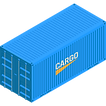Daviteq Technologies
LTE CAT M
LTE-M (LTE Cat-M1, a.k.a. eMTC) is a 3GPP cellular LPWAN running in licensed LTE bands. It’s built for battery-powered IoT that needs mobility (cell handover), lower latency than NB-IoT, and medium throughput (hundreds of kbps, peak up to ~1 Mbps depending on network/ mode). It supports PSM/ eDRX power-saving and optional VoLTE for voice-capable use cases (e.g., alarms, assisted living).
How Does LTE-M Work?
LTE-M uses existing 4G LTE cellular networks with a special low-power mode for IoT devices. Devices connect directly to LTE base stations, enabling reliable two-way communication with higher data rates than NB-IoT. The network supports mobility, voice (VoLTE), and real-time data transfer, making it ideal for asset tracking, wearables, and smart meters.

1. IoT Device (UE)
Sensor/ asset tag/ wearable with an LTE-M module collects data and opens a narrowband (≈1.4 MHz) LTE-M link when needed. Power modes (PSM/ eDRX) minimise radio on-time.
2. LTE-M Base Station (eNB/ gNB)
Nearby LTE cell (upgraded for Cat-M1) receives the packet; normal LTE scheduling/ harq applies. Mobility and in-network handover keep sessions while moving.
3. Core Network (EPC/ 5GC interwork)
Authenticates the UE, applies QoS, and routes IP/Non-IP data securely to the operator’s IoT/ APN.
4. IoT Platform / Cloud
Operator or cloud platform ingests, stores, and exposes data via APIs (MQTT/ HTTP), enables FOTA/ commands.
5. Application
Dashboards, alerts, analytics, and control (downlink) close the loop.

LTE-M Key Features
Long range coverage
Up to 15–20 km in rural areas, 2–10 km in urban areas
Low power consumption
Devices can operate for 5–10 years on a single battery
Licensed spectrum
Less interference, better security & QuS
High data rates - Support mobility
Up to ~1 Mbps and low latency; Good for tracking, fleets, wearables
Supports a large number of devices
Thousands of nodes per base station
Higher cost
Data rates from only 0.3 kbps to 50 kbps, not suitable for large data volumes
Rely on telco
Requires local carrier support

LTE-M Applications

Healthcare
LTE-M is perfect for wearable devices such as smartwatches, health trackers, and remote patient monitoring systems. Its support for mobility, voice (VoLTE), and extended battery life enables continuous health data transmission and emergency alerts.

With mobility support and seamless handover between cells, LTE-M is ideal for tracking vehicles, containers, or livestock in transit. It ensures real-time location updates and condition monitoring across wide geographical areas.
Smart
City

LTE-M powers connected city infrastructure such as street lighting, waste management, and parking systems. Its reliable coverage and moderate data rate allow municipalities to improve efficiency, reduce costs, and provide better public services.
LTE-M & Other Connectivities
Title |
|---|
Coverage Range |
Data Rate |
Power Consumption |
Device/ Service Cost |
Required Infrastructure |
Typical Applications |
LTE-M | NB-IoT | Sigfox | Sub-1GHz |
|---|---|---|---|
1–10 km | 1–10 km (excellent indoor penetration) | 3–10 km (urban), 30–50 km (rural) | 1–10 km |
Up to ~1 Mbps | 26–250 kbps | 100 bps uplink, 600 bps downlink | Several kbps to hundreds of kbps |
Medium | Low to medium | Very low | Very low |
Medium | Medium (IoT SIM) | Low (subscription-based) | Low |
LTE mobile network | NB-IoT mobile network | Sigfox network | Self-deployed network |
Wearables, vehicle tracking, healthcare devices, mobile POS, fleet management | Smart meters, environmental monitoring, smart parking, healthcare devices, logistics tracking | Low-cost asset tracking, utility meters, simple low-cost sensors, simple alarm & monitoring systems | Warehouse monitoring, environment monitoring, industrial monitoring and control |
Daviteq LTE-M Sensors & Actuators
-
Low power design
-
Global CAT NB1/ NB2 - LTE HD-FDD B1/B2/B3/B4/B5/B8/B12/B13/B17/B18/B19/B20/B25/B28/B66
-
10-Year battery with just 2 x AA 1.5V Alkaline or Lithium battery (depends on sensor type and configuration)
-
Standard internal antenna
-
Optional external antenna
-
Optional with Solar harvesting energy with 10-Year Lifetime;
-
IP67/ 68 protection for both Indoor and Outdoor applications;
-
Ex d approved design for Hazardous zones 1-2-21-22
-
CE/FCC on request
-
Integrate with 100+ sensor types or I/O: temperature, humidity, pressure, level, vibration, CO₂, CO, NH₃, Cl₂, H₂S...
LTE-M Sensors
LTE-M Gateways
Resources
Frequently Asked Questions
Find quick answers to common questions about wireless connectivity, compatibility, and how to choose the right technology for your IoT deployment.
What is LTE-M in terms of 3GPP specifications?
LTE-M (Long Term Evolution for Machines), standardised in 3GPP Release 13 and enhanced in later releases, is a cellular IoT technology classified under LTE Cat-M1. It leverages the LTE physical layer but is optimised for Machine-Type Communications (MTC), featuring reduced device complexity, extended coverage (up to +15 dB compared to GSM), and the ability to operate within narrowband 1.4 MHz channels.
How does LTE-M achieve efficiency in data transmission and mobility?
LTE-M achieves efficiency by employing half-duplex FDD operation, reduced bandwidth (1.4 MHz) while still supporting LTE’s OFDMA/ SC-FDMA air interface, and advanced features like Coverage Enhancement (CE) modes for deep-indoor penetration. Unlike NB-IoT, LTE-M supports seamless cell handover, enabling continuous connectivity in mobile scenarios such as asset tracking or wearables. These optimisations balance low power consumption with real-time data transmission.
What are the key advantages of LTE-M over NB-IoT?
-
Mobility support (works with moving assets and vehicles).
-
Voice over LTE (VoLTE) capability for emergency calls and two-way communication.
-
Higher data rate (up to 1 Mbps) and lower latency.
-
Better suited for medium-complexity IoT devices.
What kind of devices or applications are best suited for LTE-M?
LTE-M is ideal for wearable devices, healthcare monitoring, asset tracking, fleet management, and smart city solutions where mobility, voice, and moderate data rates are essential.
How does LTE-M ensure long battery life?
LTE-M supports power-saving features like Power Saving Mode (PSM) and extended Discontinuous Reception (eDRX), allowing devices to sleep for extended periods while staying connected, enabling battery life of 5–10 years depending on use case.
Got more questions?





